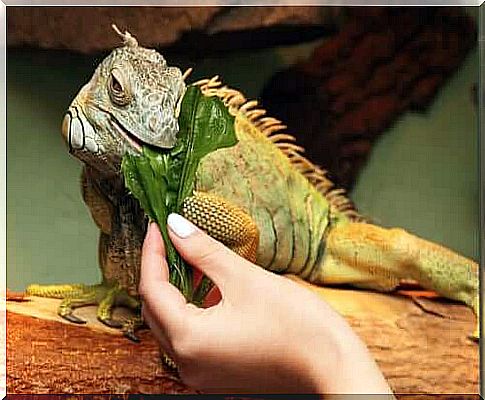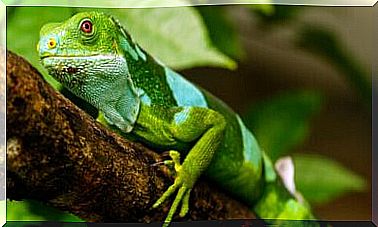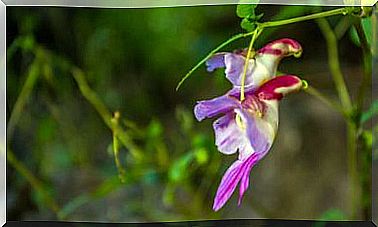What Do Green Iguanas Eat?

Green iguanas are reptiles belonging to the order Squamata . They are animals characterized by having the upper jaw fused with the skull. Snakes, chameleons and other lizards also belong to this group.
Its population distribution is located in Central and South America, from Mexico to Brazil. Additionally, we can find them in Florida, but as an invasive species.
Unlike the vast majority of reptiles, green iguanas are herbivorous animals, specifically folivores, which feed on leaves.
In captivity, the iguana’s diet is very poor, as the exact composition of an ideal diet for these animals is currently unknown. In this context, there is only isolated data, but if applied they can provide good results.
Feeding green iguanas in the wild
Iguanas that live freely in their natural environment feed mainly on the leaves of the trees in which they live. These leaves are the main source of fiber, protein and calcium, three essential compounds in the iguanas’ diet.

Another food that iguanas consume are flowers. They represent almost 25% of the food eaten daily by these reptiles.
Generally, iguanas that live in captivity are also fed on fruit. However, fruits are a small part of the wild iguanas’ diet (only 3%). This is because fruits are rarely available to iguanas that live in the wild.
Feed for green iguanas in captivity
For green iguanas to be healthy when kept in terrariums, you must pay attention to several factors.
First, unlike carnivorous reptiles, they must be fed every day. Also, food scraps must be removed at night and the container must be rinsed with hot water. Above all, the diet should be composed almost entirely of vegetables.
Another very important detail is to know the calcium-phosphorus ratio contained in the diet, which must be equal to or greater than 2:1. Below, we will present a list of recommended fruits and vegetables, from the most to the least acceptable.
The list also takes into account the ratio of calcium to phosphorus recommended for daily consumption.

The best fruits and vegetables, according to this proportion, are:
- Turnip
- Chinese cabbage
- Cabbage (outer leaves)
- Coriander
- cabbage
- Mustard (sprouts)
- Dandelion
- Endive
- Broccoli (leaves)
- Cress
- Chard
- Cauliflower leaves
- Parsley
- beet leaves
- Papaya
- Orange
- dried figs
- prickly pear
Vegetables and fruits with an acceptable calcium-phosphorus ratio:
- Avocado
- Garlic
- Celery (leaves)
- Khaki
- Strawberry
- Tangerine
- Grape
- Raw leeks
Vegetables and fruits that should be used only sporadically:
- Damascus
- Zucchini
- Cherry
- Chirimoya
- Date
- Spinach
- soy leaves
- Green bean
- Cucumber
- Banana
- watermelon
- Melon
- Carrot
- Mango
Other factors to consider
In addition to food, the iguana should always have a container with clean water. Water must be changed daily. After all, iguanas, like other reptiles, tend to defecate on it.
Food should be offered washed and chopped into small pieces to avoid mouth sores. In addition, the iguana’s diet can be supplemented with feeds suitable for these animals.
Finally, it is important to keep the terrarium at an average temperature of 30°C, with areas where there are lower temperatures so that the iguana can thermoregulate at will. Another important aspect is the amount of sun needed.
In summer, it can be taken in the sun directly, never through the glass of the terrarium. If it is removed from the terrarium, we must always provide shaded areas and a container with water.
In winter, ultraviolet radiation must be supplied with a lamp with a wavelength between 290 and 310 nanometers.
If this is not done, the animal may have problems synthesizing vitamin D3. As a result, he may have calcium assimilation problems that can even be life-threatening.









